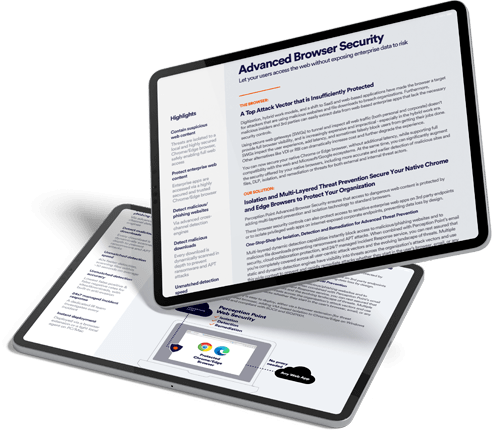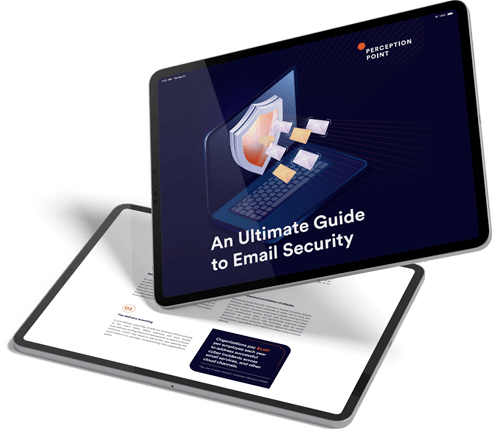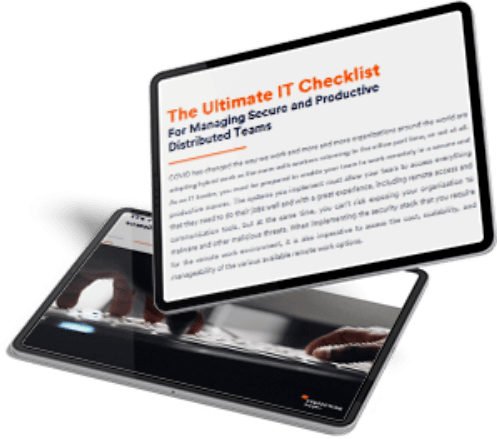By Karen Krivaa, Chief Marketing Officer, Perception Point, winner of Best Security Innovation in a SaaS Product (B2B, Enterprise) at SaaS Awards 2022
Traditional cybersecurity systems were once groundbreaking.
Naturally, as the cyber-threat landscape continues to evolve at a dizzying pace, that is no longer the case. In the best-case scenario, traditional defenses can be a drain on resources. In the worst, they can jeopardize critical enterprise assets.
In fact, in a survey of over 200 CISOs and senior cybersecurity personnel, 40% said that their current cybersecurity strategy will likely be outdated in just two years – and an additional 37% speculated it would happen in three.
As enterprises continue to be targeted by increasingly sophisticated threat actors, it is vital that they assess the efficacy of their legacy cybersecurity solutions and adapt to the burgeoning threat landscape accordingly.
Traditional Cybersecurity Solution Limitations
Backed by complex configuration and inefficient maintenance processes, traditional systems often lend themselves to poor management and impractical patches and updates.
Although many traditional solutions have shifted to be cloud-compatible, they are not cloud-native – affecting their ability to support the speed and scale required of the modern business environment.
In general, these solutions also lack the agility of cloud-native SaaS applications, whether it be in:
- Configuration;
- Deploying updates;
- Supporting new features.
In fact, most traditional solutions are point-specific and cannot keep up with the rapidly expanding threat surfaces or the growing number of channels that hackers leverage – an ability that is particularly important especially when new or unique threats are identified.
Non-cloud solutions are simply no longer relevant, and keeping these traditional cybersecurity solutions up-to-snuff is no longer cost-effective – almost 50% of the UK government’s IT spend is dedicated to maintaining outdated legacy systems. It is a waste of resources that could instead be spent overhauling systems in ways that will help secure them long-term.
Meanwhile, the false sense of security that traditional solutions provide, gives enterprise users the misguided confidence that often causes them to lower their guard,and behave recklessly. For example, Osterman research has found that 89% of organizations have experienced one or more successful email breaches in the 12 months preceding February 2022, almost twice the amount than was recorded in 2019, and security team managers are the most concerned that current email security solutions do not block serious inbound threats.
The Benefits of Innovation
Modern cybersecurity SaaS tools have been engineered to be compatible with contemporary tools such as cloud email, commonly used web browsers as well as cloud-based apps and collaboration tools.
Cloud-based cybersecurity tools are easily scalable. Legacy solutions, on the other hand, can utilize on-premise software that generally requires in-house server hardware, IT employees on hand to support and manage potential issues that may arise, and on-premise updates to machines with relatively fixed resources and performance rates.
Many traditional systems have indeed evolved to support the cloud but because they are not cloud native, they are still limited when it comes to management, integration, performance at scale, and agility. The virtual machines (VMs) of cloud-native software, on the other hand, are highly flexible and can be automatically scaled up or down according to the needs of business demands without impacting performance.
- Algorithms and logic: can be seamlessly updated;
- Vulnerabilities: can be plugged;
- Patches: can be seamlessly uploaded for all customers in response to the dynamic threat landscape.
For SaaS solutions with a managed Incident response service, both SOC and IT teams do not need to be present to deal with incidents or potential platform issues, nor do they need to be concerned with the ongoing costs of server hardware, power consumption, and space, which as the company grows are likely to increase with them.
In short, the adaptability of SaaS solutions allows enterprises to keep up to date with modern business environments, despite how quickly they are changing. For example, integrated cloud email security (ICES) solutions, a term coined by Gartner in their latest email security market guide, provide all of the added benefits of cloud-native security, while still being easily adaptable to new communication technologies.
By combining cloud-based ability with cutting-edge agility, ICES solutions are able to provide the necessary protection for the expanding number of communication and collaboration channels, and reinforce the digital network of today’s intricate business arena.
Today’s modern cybersecurity solutions
These are solutions that are faster, have more accurate detection rates, and employ multiple advanced detection engines, which power rapid, precise static and dynamic scanning of text, files, and URLs. They also use AI (artificial intelligence) and ML (machine learning) methods, such as NLP (Natural Language Processing), OCR (Optical Character Recognition), image recognition, and other novel advanced algorithms to identify impersonation techniques, phishing sites, attacks, and even spam.
ML-based tools are also being used to support overworked and under-resourced SOC teams, and the industry is already seeing promising results when it comes to workload reductions and conserving resources.
Organizations should also begin to migrate to cybersecurity solutions with next-gen sandboxes. Legacy sandboxing technology not only misses threats but is also painfully slow – sometimes requiring up to 20 minutes to dynamically scan a file. Innovations in this area deliver near-real-time dynamic scanning that does not rely on known signatures and actually delivers a verdict at the exploit stage, using CPU-level technology for precise APT prevention. This novel method of scanning is not only more accurate but also efficient and allows solutions to scan 100% of the content, without impacting productivity.
Upgrading to a Managed Service
In our current era of budget cuts and team shortages, a managed service can provide breathing room for understaffed and overworked cybersecurity teams. Managed services can be utilized 24/7, providing minimal overhead for security teams and ensuring maximum protection in a cost-effective way without calling on IT teams to pull round-the-clock shifts.
A vendor that delivers managed Incident Response services combined with the solution can provide:
- In-depth reporting;
- Deep-level analysis of key incidents and trends;
- Consistent coverage across all threat vectors;
- Ongoing detection and optimization of the threat protection systems.
Even though ML-based technology is making long strides in the cybersecurity industry, it is currently unable to effectively deal with the analysis and management of all incidents, including more sophisticated cyberattacks. Indeed, machine learning has not yet reached the point where it can fully replace human-powered departments – it still requires the support and intervention of an expert response team to quell the threats that manage to slip by AI-powered defenses.
When all is said and done, traditional solutions are expensive, difficult to scale, require extensive resources, and are generally unequipped to keep pace with the ever-evolving cybersecurity threat landscape. Modern SaaS solutions are the appropriate alternative – they can be easily adapted to new directions, and they are constantly updated to stay at the bleeding-edge of threat management.
Any company serious about keeping their resources and assets safe should run a thorough analysis of their current cybersecurity systems and ensure that they are as up to date and effective as possible. Without a cybersecurity overhaul, enterprises are liable to get caught in the sunk cost trap – the destructive cycle of continually sinking money into outdated, susceptible systems just because so much has been invested in them already. Enterprises that are still reliant on traditional cybersecurity systems need to reconsider their defense strategies lest they become unsustainably vulnerable.
This article was first published by the Cloud Awards on November 15, 2022.






























